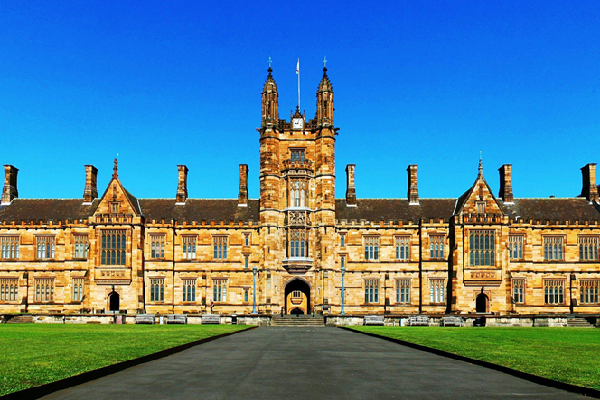University of Sydney: Unravelling the mystery of green doughnuts on the Great Barrier Reef
Scientists have systematically mapped and sampled ‘green doughnuts’ for the first time since the seascape lurking at the bottom of the Great Barrier Reef was discovered in the 1970s – revealing an ecosystem teeming with life.
In this multidisciplinary study of the area, under a fact-finding project named HALO, a team of Australian and international scientists set out aboard the CSIRO research vessel RV Investigator to understand how these sometimes near-perfect rings formed over the past 12,000 years of the Holocene, their importance as reef habitats and their role in cycling chemicals.
Professor Jody Webster from the University of Sydney’s School of Geosciences led the team of researchers to investigate these mysterious structures.
“The major objective of the HALO project, and the voyage, is to better understand these enigmatic structures by mapping and sampling them in breathtaking detail,” said Professor Webster.
What are the green doughnuts?
The naturally occurring doughnut shapes are known geologically as bioherms, sprawling build-ups of calcium carbonate sediments left behind by dead generations of a genus of calcareous green algae called Halimeda that flourish in the area.
Vast build-ups of Halimeda are nestled behind the Great Barrier Reef which forms a sort of protective physical barrier for the area.
But the bioherms themselves represent a vital inter-reef habitat that covers about 26 percent of the northern Great Barrier Reef shelf – an area 6,000 square kilometres in size and larger than the adjacent coral reef system.
While little is known about Halimeda bioherms and their strange doughnut shapes, one of the poorest understood parts of the entire Great Barrier Reef ecosystem, that mystery is on the path of being torn wide open.
“Only until very recently, based on work that our group has done, do we finally have an idea of what these build-ups actually look like, incredibly crazy-looking ridges and doughnut-like shapes, how big they are and that they might harbour great biodiversity,” said Professor Webster.
What the team uncovered on the reef
The team came home from the 25-day voyage with a veritable treasure trove of information about the bioherms, collecting many samples and detailed surface and sub-surface maps which will allow researchers to expand on limited knowledge about the underwater labyrinth.
Professor Maria Byrne, a marine biologist at the University of Sydney’s School of Life and Environmental Sciences who was part of the voyage, said the samples carted back “most certainly” contain new species of sea star, algae, and sponges, along with hundreds of bristle worms and brittle stars, the novelty of which will be confirmed by further study using DNA and taxonomic identification.
“Inside those samples is an incredible diversity of invertebrate fauna – worms, starfish, crabs, snails, coral, sponges – and flora – green calcareous algae, the Halimeda, red calcareous algae, various types of macro algae, and most certainly numerous new species,” said Professor Byrne.
“As a biologist, I was very excited with the discovery of a crown-of-thorns starfish, at 40 metres in areas that do not have a lot of coral, and an endangered sea cucumber in the bioherm habitats.”
Professor Webster said the cruise has been an “incredible success” with sonar mapping delivering the first systematic and highest resolution 3D sea floor images of the bioherms ever collected.
“They will allow us to finally understand the geometric shapes and patterns that make up the weird seascapes of the bioherms,” said Professor Webster.
“We used another system to look ‘beneath’ the seabed using sound waves that will allow us again, for the first time, to understand their internal structure in three dimensions. Combined with the precisely located sediment cores we took, this will allow us to reconstruct their anatomy and evolution over the last 12,000 years.
“We will also be able to make the first seabed habitat map for the bioherms that will assist agencies like the Great Barrier Marine Park Authority better manage these habitats and ecosystems.
“In terms of sediments, we found an incredible array of mud sands gravels, cemented rocks, ancient mangroves deposits, fossil corals and other reef biota likely thousands of years old.”
Next steps to understand the marine acreage
Post-cruise science will now get into “full swing”, according to Professor Webster, with teams of scientists in Australia, including the University of Sydney, the University of Queensland, Queensland University of Technology, James Cook University and Geoscience Australia, and labs across the world digging into the mounds of data.
“This work will focus on a range of topics, from producing detailed 3D surface maps and the internal growth structure of the bioherms from sediment cores, investigating imagery of the habitat and biota, including potential new species and preliminary assessment of the biodiversity, quantifying the nutrient cycling in the bioherms from water and sediments taken from the onboard incubation experiments, investigating the wealth of physical and chemical oceanographic data we collect over these bioherms, and reconstruction of new high-resolution Holocene paleoenvironmental records,” said Professor Webster.
“In terms of the potential for carbon capture of these habitats – we’re also really excited that we’ll be able to finally calculate much more accurate CaCO3 (calcium carbonate) budgets for the entire northern Great Barrier Reef.
“So little is known about the Halimeda, and if the bioherms have already been affected by ocean acidification and warming or not. However, our voyage provides the crucial first baseline information about the nature and origin of the bioherms.
“We also hope that by evaluating how the bioherms have responded to climate changes over longer timescales, this will provide a framework that will allow us to assess their future vulnerability.”

